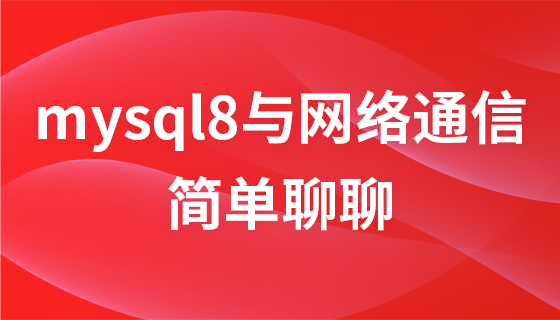处理json数据的格式化和生成动态结构
来源:stackoverflow
时间:2024-02-14 12:09:22 301浏览 收藏
本篇文章主要是结合我之前面试的各种经历和实战开发中遇到的问题解决经验整理的,希望这篇《处理json数据的格式化和生成动态结构》对你有很大帮助!欢迎收藏,分享给更多的需要的朋友学习~
问题内容
{
"type": "object",
"properties": {
"firstname": {
"type": "string",
"title": "first name",
"default": "chuck"
},
"lastname": {
"type": "string",
"title": "last name"
},
"telephone": {
"type": "string",
"title": "telephone",
"minlength": 10
}
}
}
我想构造上图所示的数据并发送给前端渲染。它必须包含类型和属性字段。属性中的字段是核心数据。
//testmap is a map. key is variable name , value is value
testmap := drawvaluenamefrompareselffile(testpath)
marshal, _ := json.marshalindent(testmap, "", " ")
res := string(marshal)
helper.ok(c, res)
type resp struct {
code errcode.code `json:"code" binding:"required"`
message string `json:"message" binding:"required"`
data interface{} `json:"data" binding:"required"`
}
// ok
func ok(c *gin.context, data interface{}) {
c.json(http.statusok, resp{
code: errcode.errnone,
data: data,
})
}
但这就是我的结果
{
"code": 0,
"message": "",
"data": "{\n \"title\": \"product set\",\n \"type\": \"object\",\n \"properties\": {\n \"id\": {\n \"type\": \"number\"\n },\n \"name\": {\n \"type\": \"string\"\n },\n \"price\": {\n \"type\": \"number\"\n },\n \"dimensions\": {\n \"type\": \"object\",\n \"properties\": {\n \"length\": {\n \"type\": \"number\"\n },\n \"width\": {\n \"type\": \"number\"\n },\n \"height\": {\n \"type\": \"number\"\n }\n }\n },\n \"warehouselocation\": {\n \"type\": \"object\",\n \"properties\": {\n \"latitude\": {\n \"type\": \"number\"\n },\n \"longitude\": {\n \"type\": \"number\"\n }\n }\n }\n }\n}\n"
}
有换行符和转义字符。 我尝试使用映射构建结构,但我对大小写转换和嵌套结构感到恼火
这是我目前使用的方法。但解析json时,无法将其改为小写字母。前端需要小写字母
package main
import (
"errors"
"reflect"
"fmt"
)
// 构造器
type Builder struct {
// 用于存储属性字段
fileId []reflect.StructField
}
func NewBuilder() *Builder {
return &Builder{}
}
// 添加字段
func (b *Builder)AddField(field string,typ reflect.Type) *Builder {
b.fileId = append(b.fileId,reflect.StructField{Name: field,Type: typ})
return b
}
// 根据预先添加的字段构建出结构体
func (b *Builder)Build() *Struct {
stu := reflect.StructOf(b.fileId)
index := make(map[string]int)
for i := 0; i < stu.NumField(); i++ {
index[stu.Field(i).Name] = i
}
return &Struct{stu,index}
}
func (b *Builder) AddString(name string) *Builder {
return b.AddField(name, reflect.TypeOf(""))
}
func (b *Builder) AddBool(name string) *Builder {
return b.AddField(name, reflect.TypeOf(true))
}
func (b *Builder) AddInt64(name string) *Builder {
return b.AddField(name, reflect.TypeOf(int64(0)))
}
func (b *Builder) AddFloat64(name string) *Builder {
return b.AddField(name, reflect.TypeOf(float64(1.2)))
}
func (b *Builder) AddStruct(name string) *Builder {
// type T struct { a, b int }
tmp := make(map[string]string)
tmp["test"] = "test"
return b.AddField(name, reflect.TypeOf(tmp))
}
// 实际生成的结构体,基类
// 结构体的类型
type Struct struct {
typ reflect.Type
// <fieldName : 索引> // 用于通过字段名称,从Builder的[]reflect.StructField中获取reflect.StructField
index map[string]int
}
func (s Struct)New() *Instance {
return &Instance{reflect.New(s.typ).Elem(),s.index}
}
// 结构体的值
type Instance struct {
instance reflect.Value
// <fieldName : 索引>
index map[string]int
}
var (
FieldNoExist error = errors.New("field no exist")
)
func (in Instance)Field(name string) (reflect.Value,error) {
if i,ok := in.index[name];ok{
return in.instance.Field(i),nil
}else {
return reflect.Value{},FieldNoExist
}
}
func (in *Instance) SetStruct(name string, resp map[string]string) {
if i,ok := in.index[name];ok{
for k ,v := range resp {
// value, _ :=v.(string)
fmt.Println(reflect.ValueOf(k))
fmt.Println(reflect.ValueOf(v))
// in.instance.Field(i).SetString("test")
in.instance.Field(i).Set(reflect.ValueOf(resp))
}
}
}
func (in *Instance) SetString(name, value string) {
if i,ok := in.index[name];ok{
in.instance.Field(i).SetString(value)
}
}
func (in *Instance) SetBool(name string, value bool) {
if i,ok := in.index[name];ok{
in.instance.Field(i).SetBool(value)
}
}
func (in *Instance) SetInt64(name string, value int64) {
if i,ok := in.index[name];ok{
in.instance.Field(i).SetInt(value)
}
}
func (in *Instance) SetFloat64(name string, value float64) {
if i,ok := in.index[name];ok{
in.instance.Field(i).SetFloat(value)
}
}
func (i *Instance) Interface() interface{} {
return i.instance.Interface()
}
func (i *Instance) Addr() interface{} {
return i.instance.Addr().Interface()
}
func main() {
pe := NewBuilder().
AddString("Name").
AddInt64("Age").
AddStruct("Typet").
Build()
p := pe.New()
p.SetString("Name","你好")
p.SetInt64("Age",32)
fmt.Printf("%T\n",p)
fmt.Printf("%T\n",p.Interface())
fmt.Printf("%+v\n",p.Interface())
fmt.Printf("%T\n",p.Addr())
fmt.Printf("%+v\n",p.Addr())
tmp := make(map[string]string)
tmp["type1"] = "object1"
tmp["type2"] = "object2"
tmp["type3"] = "object3"
p.SetStruct("Typet",tmp)
fmt.Printf("%T\n",p)
fmt.Printf("%T\n",p.Interface())
fmt.Printf("%+v\n",p.Interface())
fmt.Printf("%T\n",p.Addr())
fmt.Printf("%+v\n",p.Addr())
}正确答案
您需要对动态字段使用 map。
真正的动态数据可以存储在 map[string]interface{}
对于有限数量的字段,您可以使用强类型:
type Response struct {
Type string `json:"type"`
Properties map[string]RespProp `json:"properties"`
}
type RespProp struct {
Type string `json:"type"`
Title string `json:"title"`
Default string `json:"default,omitempty"`
MinLength int `json:"minLength,omitempty"`
}
https://go.dev/play/p/W8mpg7HvCwM
今天带大家了解了的相关知识,希望对你有所帮助;关于Golang的技术知识我们会一点点深入介绍,欢迎大家关注golang学习网公众号,一起学习编程~
声明:本文转载于:stackoverflow 如有侵犯,请联系study_golang@163.com删除
相关阅读
更多>
-
502 收藏
-
502 收藏
-
501 收藏
-
501 收藏
-
501 收藏
最新阅读
更多>
-
139 收藏
-
204 收藏
-
325 收藏
-
478 收藏
-
486 收藏
-
439 收藏
-
357 收藏
-
352 收藏
-
101 收藏
-
440 收藏
-
212 收藏
-
143 收藏
课程推荐
更多>
-

- 前端进阶之JavaScript设计模式
- 设计模式是开发人员在软件开发过程中面临一般问题时的解决方案,代表了最佳的实践。本课程的主打内容包括JS常见设计模式以及具体应用场景,打造一站式知识长龙服务,适合有JS基础的同学学习。
- 立即学习 543次学习
-

- GO语言核心编程课程
- 本课程采用真实案例,全面具体可落地,从理论到实践,一步一步将GO核心编程技术、编程思想、底层实现融会贯通,使学习者贴近时代脉搏,做IT互联网时代的弄潮儿。
- 立即学习 516次学习
-

- 简单聊聊mysql8与网络通信
- 如有问题加微信:Le-studyg;在课程中,我们将首先介绍MySQL8的新特性,包括性能优化、安全增强、新数据类型等,帮助学生快速熟悉MySQL8的最新功能。接着,我们将深入解析MySQL的网络通信机制,包括协议、连接管理、数据传输等,让
- 立即学习 500次学习
-

- JavaScript正则表达式基础与实战
- 在任何一门编程语言中,正则表达式,都是一项重要的知识,它提供了高效的字符串匹配与捕获机制,可以极大的简化程序设计。
- 立即学习 487次学习
-

- 从零制作响应式网站—Grid布局
- 本系列教程将展示从零制作一个假想的网络科技公司官网,分为导航,轮播,关于我们,成功案例,服务流程,团队介绍,数据部分,公司动态,底部信息等内容区块。网站整体采用CSSGrid布局,支持响应式,有流畅过渡和展现动画。
- 立即学习 485次学习
